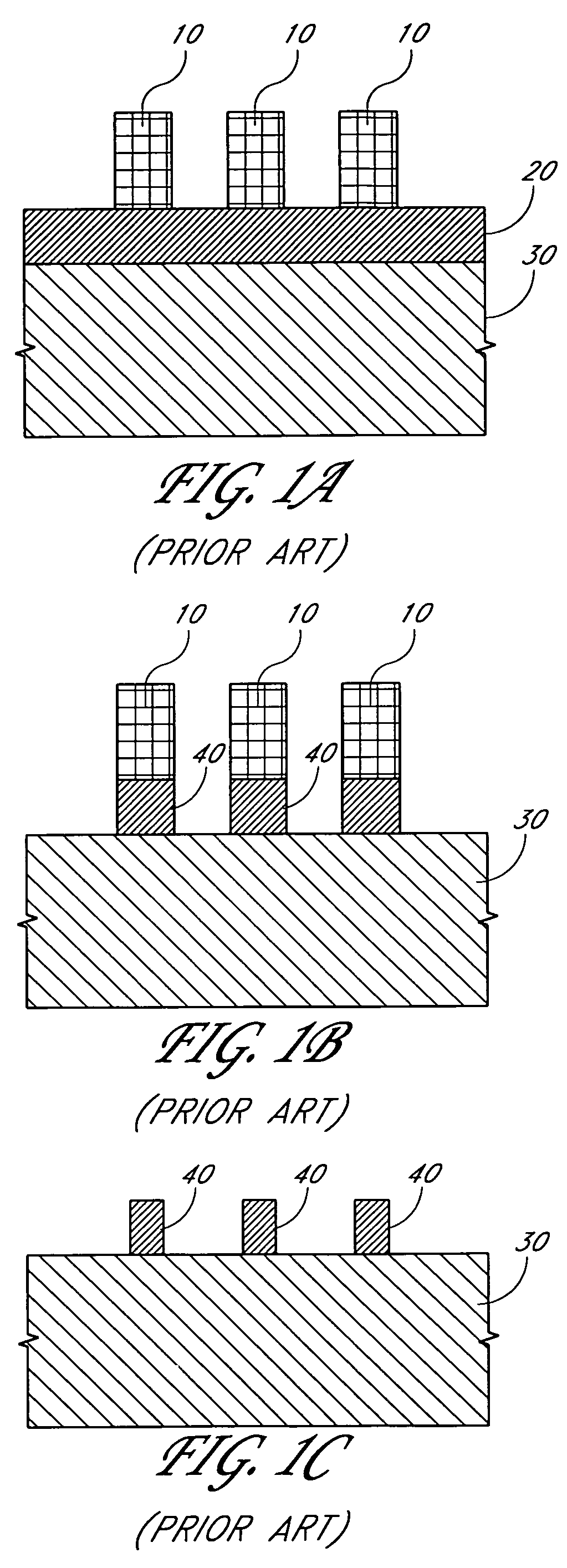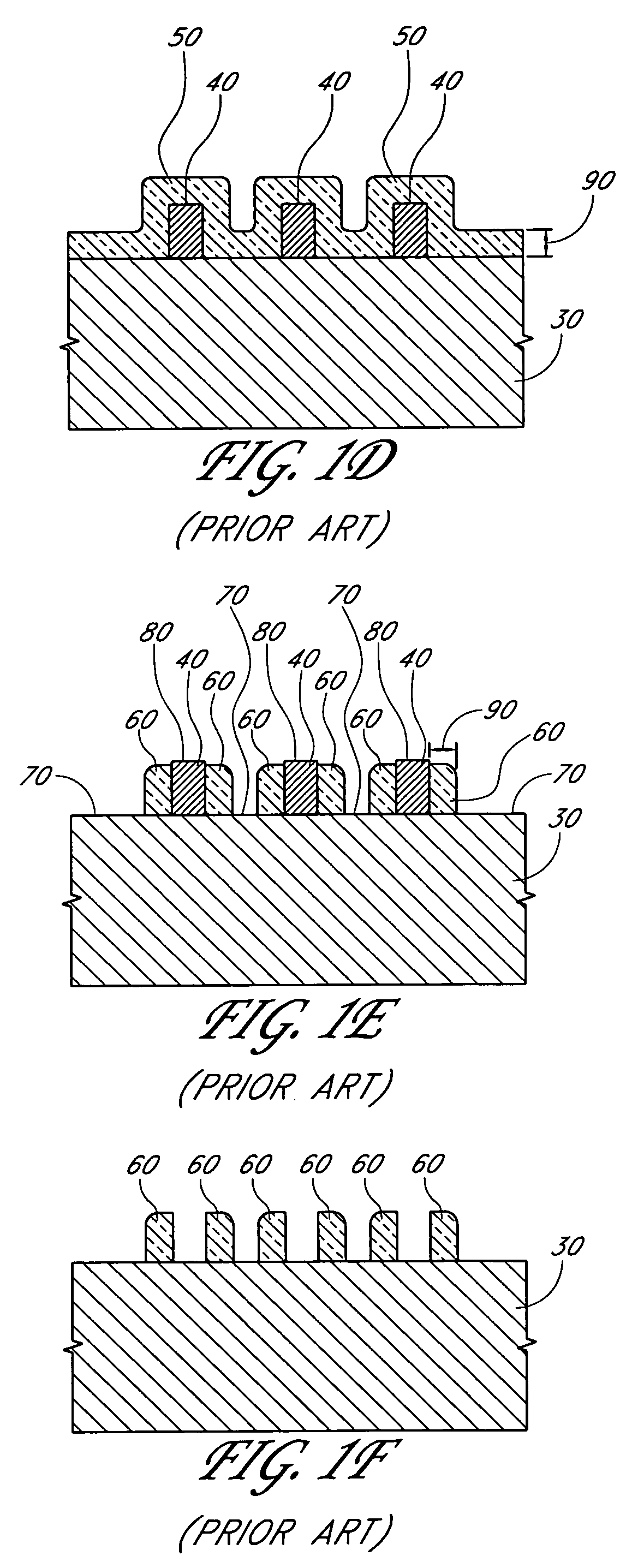Protective coating for planarization
a protective coating and planarization technology, applied in the direction of basic electric elements, semiconductor/solid-state device manufacturing, electric devices, etc., can solve the problems of insufficient resolution and fidelity of existing techniques, large additional steps, and insufficient transfer of fine patterns to underlying layers, etc., to reduce the height of features and filler layers.
- Summary
- Abstract
- Description
- Claims
- Application Information
AI Technical Summary
Benefits of technology
Problems solved by technology
Method used
Image
Examples
Embodiment Construction
[0056]With reference to FIG. 2, a partially formed integrated circuit 100 is provided. A substrate 110 is provided below various masking layers 120-170. The layers 120-170 can be etched to form masks for patterning underlying layers or substrate 110. These masks can be used to form various features, as discussed below. The features can comprise portions of any of the following: one or multiple transistors, diodes, capacitors, conductive lines, gates, sources, drains, or contacts to any of the above. These components can comprise portions of DRAM or flash memory arrays, NOR logic arrays, NAND logic arrays, etc. In some embodiments, the features are formed from a substrate material that comprises a semi-conducting material. For example, the semi-conducting material can be silicon, silicon-germanium compounds, or III-V materials.
[0057]As used in this specification, the term “substrate” can refer not only to the substrate layer 110, but also to any layer that underlies another layer. Th...
PUM
| Property | Measurement | Unit |
|---|---|---|
| wavelength | aaaaa | aaaaa |
| wavelength | aaaaa | aaaaa |
| wavelength | aaaaa | aaaaa |
Abstract
Description
Claims
Application Information
 Login to View More
Login to View More - R&D
- Intellectual Property
- Life Sciences
- Materials
- Tech Scout
- Unparalleled Data Quality
- Higher Quality Content
- 60% Fewer Hallucinations
Browse by: Latest US Patents, China's latest patents, Technical Efficacy Thesaurus, Application Domain, Technology Topic, Popular Technical Reports.
© 2025 PatSnap. All rights reserved.Legal|Privacy policy|Modern Slavery Act Transparency Statement|Sitemap|About US| Contact US: help@patsnap.com



